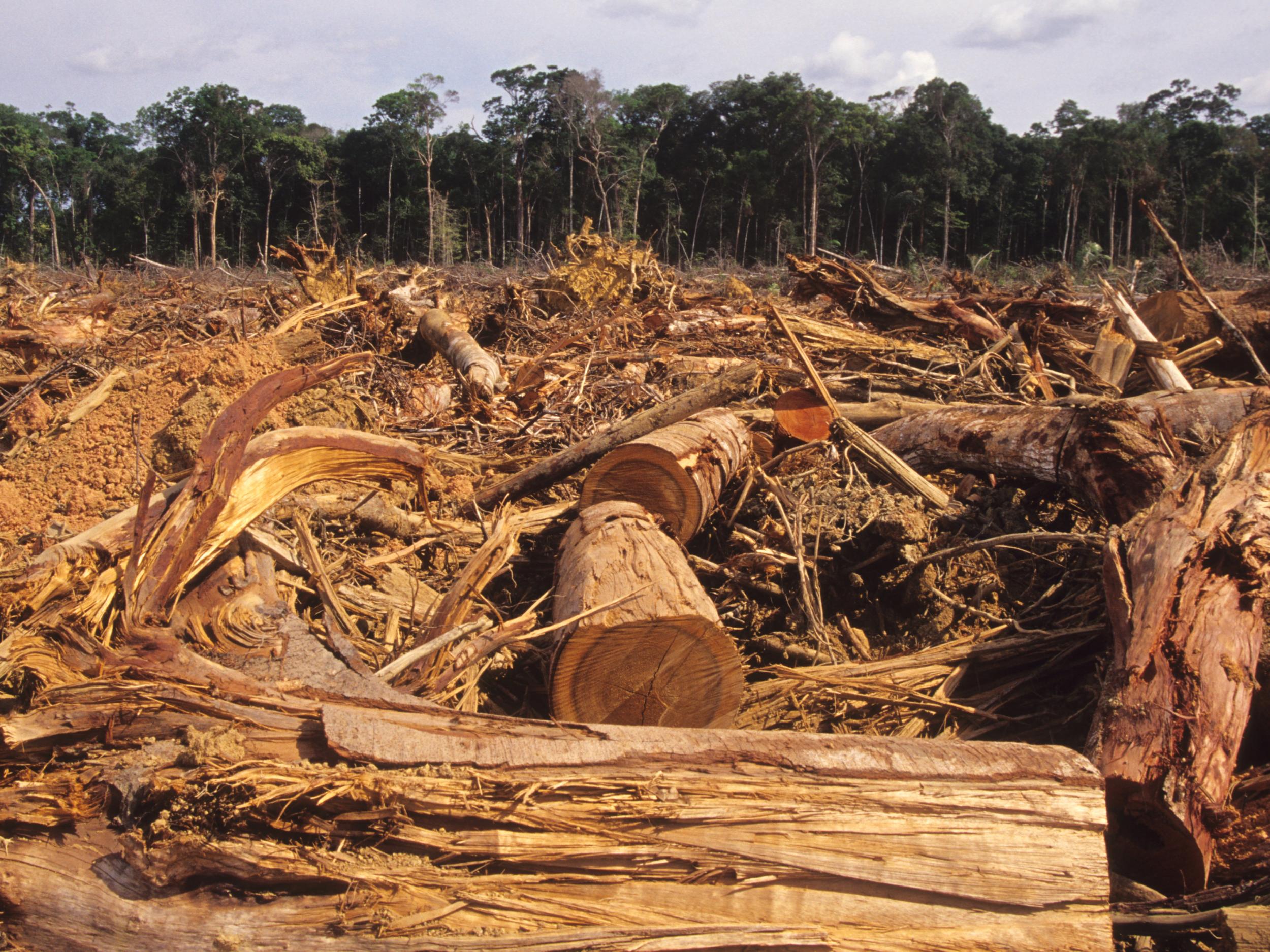US-China trade war could trigger massive destruction of Amazon rainforest, scientists warn
Forest could become 'greatest casualty of the US-China trade war', experts warn

Great swathes of the Amazon rainforest could be wiped out thanks to the bitter trade war between the US and China, scientists have warned.
The expanding global market for soya bean has already led to massive deforestation of one of the planet’s most valuable ecosystems.
Now, scientists think the trade conflict between the world’s two biggest economies, championed by US president Donald Trump, may exacerbate this problem.
The team at Germany's prestigious Karlsruhe Institute of Technology say an area of rainforest the size of Greece could be destroyed as Brazilian soya bean producers rush to satisfy Chinese demand resulting from the dispute.
Last year, the US introduced tariffs of up to 25 per cent on imported goods from China, worth a total of $250bn (£189bn). China responded with its own 25 per cent tariffs on US goods, with a total value of $110bn (£83bn).
Crucially, among these goods were soya beans, which led to bean exports from the US to China being slashed in half.
The Chinese government can either reduce its reliance on soya, expand its own production or go elsewhere to satisfy its demand.
In a commentary published in the journal Nature, the team led by Dr Richard Fuchs suggested the third option is most likely.
Brazil, which already supplies around half of China’s soya, is identified as the most likely source to fill the gap.
Using United Nations data, the team estimated that the South American nation could ramp up its production by 39 per cent, a move that would require an additional 13 million hectares of forest to be removed.
“We urge the US and China to adjust their trading arrangements immediately to avoid this catastrophe,” the authors wrote.
They concluded that governments, producers, regulators and consumers “must act now” in order to prevent the Amazon becoming “the greatest casualty of the US-China trade war”.

While there have been political and legal mechanisms that have historically prevented the expansion of soya farming in the Amazon, these have begun to deteriorate under Brazil's new president Jair Bolsonaro.
Within days of coming to office in January, he stripped land rights from the country’s indigenous people in a move that could leave areas of forest vulnerable to agricultural expansion.
The latest figures show deforestation levels in Brazil have leapt to their highest in a decade – and environmental groups are concerned that this trend will continue under Bolsonaro’s leadership.
Join our commenting forum
Join thought-provoking conversations, follow other Independent readers and see their replies
Comments
Bookmark popover
Removed from bookmarks